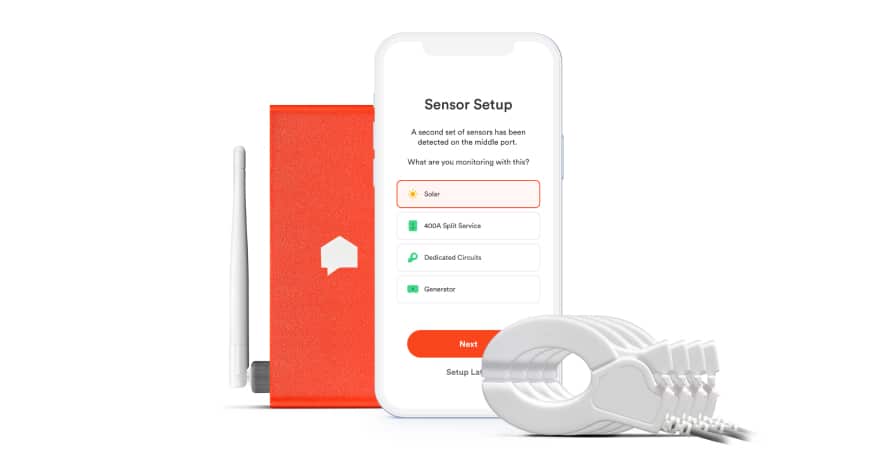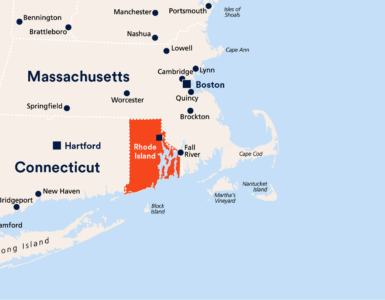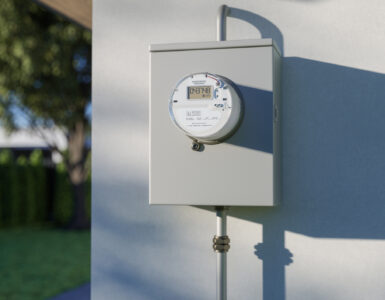Safe and reliable service at just and reasonable rates – the mantra and imperative of every utility regulatory commission for decades. But those priorities are growing. Today’s energy transition is requiring commissioners to also consider the support needed in an increasingly distributed energy system, stacked with renewables and flexible demand, necessary to meet state (and federal) clean energy goals. The problem? Building out the distribution system to support electrification can be expensive, and balancing the grid with intermittent resources requires experience to maintain reliability.
In an analogy attributed to Ron Gerwatowski, Chairman of the Rhode Island Public Utilities Commission, prioritizing decarbonization, reliability, and affordability is compared to adopting a coyote, a wolf, and a rabbit, respectively. “The coyote and wolf might find a way to coexist, but the rabbit, I don’t know about it.” So how do commissioners balance a third priority for decarbonization without a competition where affordability becomes the prey?
The answer, in part, lies with the right infrastructure to support all three priorities – a fence, if you will, for purposes of this analogy. Grid edge software embedded in smart meters is that infrastructure. Software in meters can be leveraged to create flexible demand and support distributed energy resources, strengthen the reliability and safety of core utility operations, and give customers the tools and insights necessary to manage their energy usage. Software solutions therefore represent a means for ensuring that each of the regulatory priorities are given ample space without sacrificing one over the other, particularly the affordability rabbit.
Regulators should approve meter investment proposals by reflecting on the maximum benefit potential over the life of the meter relative to the initial investment cost.
It is true that early versions of smart metering made big promises about its capabilities and failed to deliver. But meters have evolved. Today, software is embedded directly within the meter eliminating the need for additional hardware. This has opened the market for third parties to leverage the meter and create new value that expands beyond just a near-term infrastructure investment. These meters are nearly standard in today’s market, making them cost-competitive for utilities with and without existing smart meters. Though there will need to be additional investments in utility back-end systems to support advanced metering, these upgrades are worth the incremental investment because of the relative benefits being created over the life of the meter.
Some use cases, like disaggregation, have been proven through pilots and scale within the industry and thus are easier to quantify in a benefit-cost analysis. But many more do not yet have quantifiable benefits associated with them just yet. Regardless, states like Massachusetts identified “potential future benefits” as being a reasonable consideration in supporting the advanced metering business cases. Thinking about affordability in the context of evaluating the cost-benefit ratio of meter infrastructure investment, regulators should consider both the near-term benefits relative to costs as well the long-term potential to unlock new benefits without much additional investment over time.
A real-time experience enabled by advanced meters ensures equity and affordability in current and future clean energy investments.
Supporting consumers with tools and resources to manage their energy usage is perhaps the most direct way of maintaining affordability for ratepayers. In Rhode Island, regulators recognized the need to accelerate the availability of new customer tools, namely Sense’s load disaggregation capabilities, to engage customers with their energy usage and help them to reduce the burden of bill increases. The ubiquity of meters makes them arguably the most equitable way of offering these tools to customers. Early investments in the right metering infrastructure that allows customers to see their energy usage data in real time is critical in broadening the kind of education and engagement needed for customers to maintain affordable bills. This is especially relevant as regulators consider the impacts of continued investments in the clean energy future on disadvantaged communities and low-income customers.
When sampled tens-of-thousands times per second or greater, waveform data from meters can also support advanced load disaggregation that strengthens electrification strategies at scale. For example, customers may be able to manage their load through behavioral efficiency or flexible demand efforts to avoid service upgrades in residential homes. Further, specific electric loads can be separated from other in-home loads to support distinct usage profiles and insights enabling customers to evaluate electric alternatives such as fuel equipment or electric vehicles. Software holds the potential to support customers becoming ready for widespread electrification without having to invest directly in their home electric service.
It should be a long-term priority to make the clean energy transition as affordable as possible by enabling software solutions to compete with hardware solutions.
Affordability is not just a near-term concept, but should also be considered over the life of the clean energy transition, which for most states falls over the next 15-25 years. That’s why investing in the right meters now, which will be in place for the vast majority of this transition, is so important. Meters with software hosting capabilities are essential in protecting the investment ratepayers are putting into this infrastructure. Software can be upgraded over the air as needed and new tools and resources – both for consumers and utility operations – can be added as they are developed. By creating an opportunity for software solutions to compete with hardware solutions, states like Connecticut are recognizing that they can facilitate new cost-competitive environments that ensure the best value for the investment. In this way, having the right meters in place gives a platform for making the clean energy transition as affordable as possible over the long term.
Protect the rabbit and everyone wins.
Balancing the two priorities of safe and reliable service and just and reasonable rates has been its own challenge over the past decades as these wolf and rabbit priorities compete for prudency. Adding a second carnivore – one with an appetite for great investments and planning – seemingly puts the rabbit in an all-out race it’s not likely to win. But with the grid-edge software embedded in smart meters acting as a fence that supports each of these priorities without sacrificing any, there is hope that affordability can exist in harmony with reliability and decarbonization to support the future energy system.







